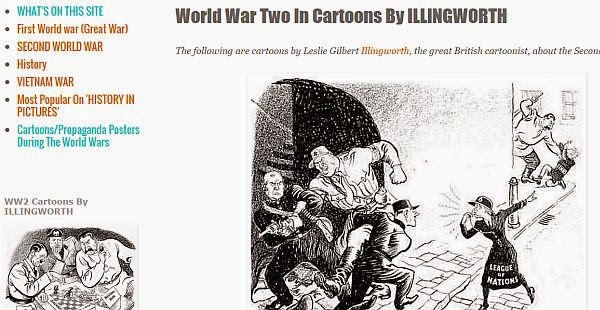V1 and V2 were attempts of a desperate Nazi Germany to turn the inexorable tide of war in its favour. They killed many people and gave the Allies a big headache. But ultimately Hitler's Vengeance weapons made little difference in the war.
Now if Einstein had not fled Germany...If the Germans had made the atom bomb before its defeat....One shudders at the thought.
V 1 and V1 made history. If not in the hands of the Nazi Germans. V1 is the father of the modern Drones being used by the Americans in Afghanistan. V2 is the mother of the ICBM.
Below is V1. Vengeance Weapon 1. Vergeltungswaffe 1
Now if Einstein had not fled Germany...If the Germans had made the atom bomb before its defeat....One shudders at the thought.
V 1 and V1 made history. If not in the hands of the Nazi Germans. V1 is the father of the modern Drones being used by the Americans in Afghanistan. V2 is the mother of the ICBM.
Below is V1. Vengeance Weapon 1. Vergeltungswaffe 1
A V1 being rolled out
The first V-1 was launched at London on 13 June 1944, one week after (and prompted by) the successful Allied landing in Europe. At its peak, more than one hundred V-1s a day were fired at southeast England, 9,521 in total, decreasing in number as sites were overrun until October 1944, when the last V-1 site in range of Britain was overrun by Allied forces. This caused the remaining V-1s to be directed at the port of Antwerp and other targets in Belgium, with 2,448 V-1s being launched. The attacks stopped when the last site was overrun on 29 March 1945. In total, the V-1 attacks caused 22,892 casualties (almost entirely civilians).
------------------------------------
The intended operational altitude was originally set at 2,750 m (9,000 ft). However, repeated failures of a barometric fuel-pressure regulator led to it being changed in May 1944, halving the operational height, thereby bringing V-1s into range of the Bofors guns commonly used by Allied AA units.
----------------------------------
Almost 30,000 V-1s were made; by March 1944, they were produced in 350 hours (including 120 for the autopilot), at a cost of just 4% of a V-2, which delivered a comparable payload. Approximately 10,000 were fired at England; 2,419 reached London, killing about 6,184 people and injuring 17,981. The greatest density of hits were received by Croydon, on the southeast fringe of London. Antwerp, Belgium was hit by 2,448 V-1s from October 1944 to March 1945.
---------------------------------
By September 1944, the V-1 threat to England was temporarily halted when the launch sites on the French coast were overrun by the advancing Allied armies. 4,261 V-1s had been destroyed by fighters, anti-aircraft fire and barrage balloons. The last enemy action of any kind on British soil occurred on 29 March 1945, when a V-1 struck Datchworth in Hertfordshire.
German Heinkel bomber He-111 carrying a flying bomb, V1 on its external sling
THE ALLIES HAPPILY LAPPED UP THE V1 TECHNOLOGY
THE ALLIES HAPPILY LAPPED UP THE V1 TECHNOLOGY
After the war, the armed forces of France, the Soviet Union and the United States experimented with the V-1.
France
The French produced copies of the V-1 for use as target drones. These were called the CT-10 and were smaller than the V-1 with twin tail surfaces. The CT 10 could be ground launched using a rocket booster or from an aircraft. Some CT-10s were sold to the UK and USA.
Soviet Union
The Soviet Union captured V-1s when they overran the Blizna test range in Poland. The 10Kh was their copy of the V-1, later called Izdeliye 10. Initial tests began in March 1945 at a test range in Tashkent with further launches from ground sites and from aircraft of improved versions continuing into the late 1940s. The inaccuracy of the guidance system compared to new methods such as beam-riding and TV guidance saw development end in the early 1950s.
The Soviets also worked on a piloted attack aircraft based on the Argus pulse jet engine of the V-1 which began as a German project, the Junkers EF 126 Lilli, in the latter stages of the war. The Soviet development of the Lilli ended in 1946 after a crash that killed the test pilot.
United States
A KGW-1 being fired from USS Cusk in 1951
Main article: JB-2 Loon
The United States reverse-engineered the V-1 in 1944 from salvaged parts recovered in England during June. By 8 September, the first of thirteen complete prototype Republic-Ford JB-2 Loons, were assembled at Republic Aviation. The United States JB-2 was different from the German V-1 in only the smallest of dimensions. The wing span was only 2.5 in (6.4 cm) wider and the length was extended less than 2 ft (0.61 m). The difference gave the JB-2 60.7 square feet (5.64 m2) of wing area versus 55 square feet (5.1 m2) for the V-1. A navalized version, designated KGW-1, was developed to be launched from LSTs (Landing Ship, Tank) as well as escort carriers (CVEs) and long-range 4-engine reconnaissance aircraft. Waterproof carriers for the KGW-1 were developed for launches of the missile from surfaced submarines. Both the USAAF JB-2 and Navy KGW-1 were put into production and were planned to be used in the Allied invasion of Japan (Operation Downfall), however the atomic bombings of Japan negated its use. After World War II, the JB-2/KGW-1 played a significant role in the development of more advanced surface-to-surface tactical missile systems such as the MGM-1 Matador and later MGM-13 Mace.
Preparing to fire a a V1
A weeping British girl is carried out of the wreckage of a house destroyed by the V1
German doodlebug (cruise missile) V-1 (V-1) in flight
Conveyor in an underground factory for assembling the plane of the projectile V-1. Germany, in 1945
This V-1 broke through the defense and fell on London.
























































